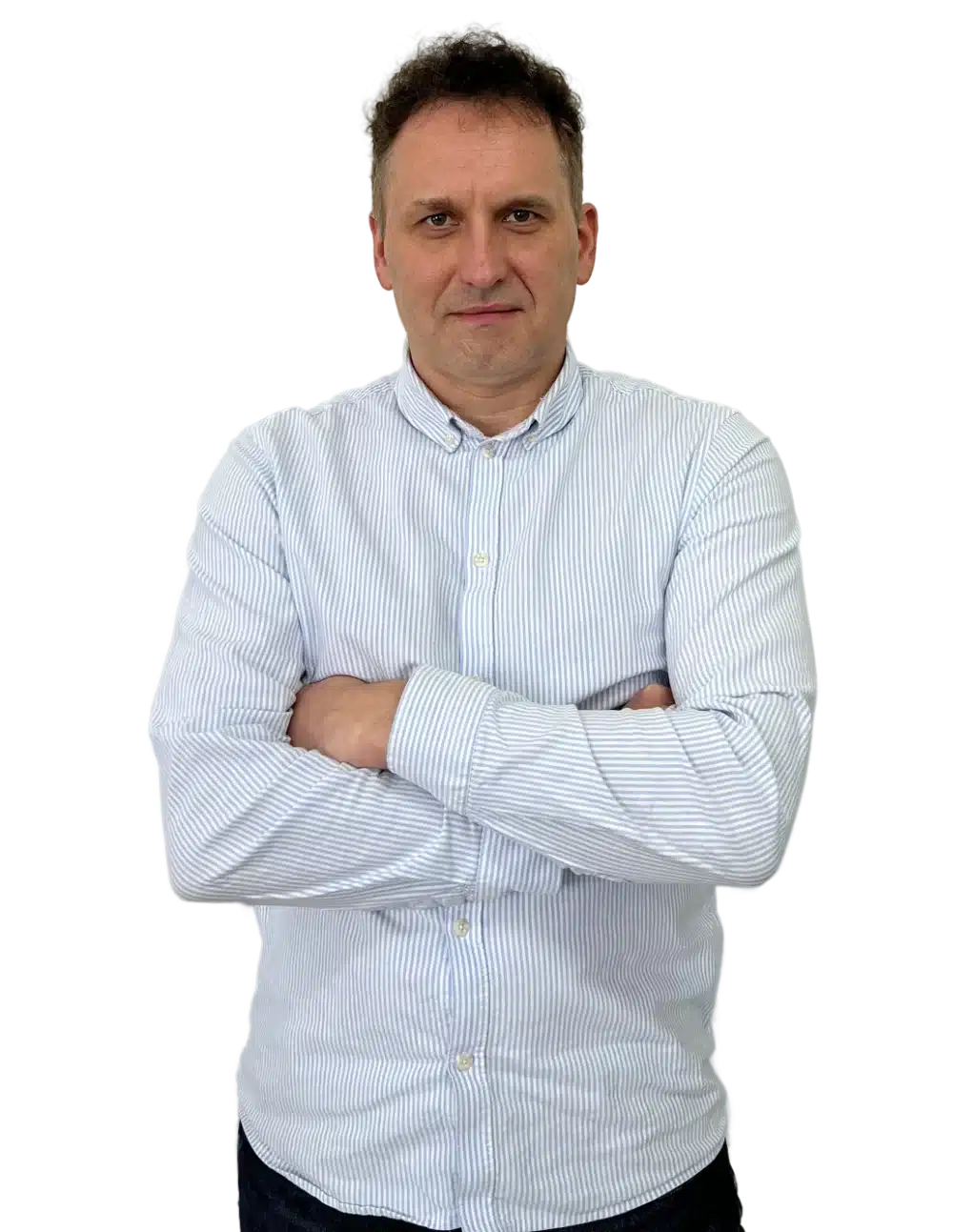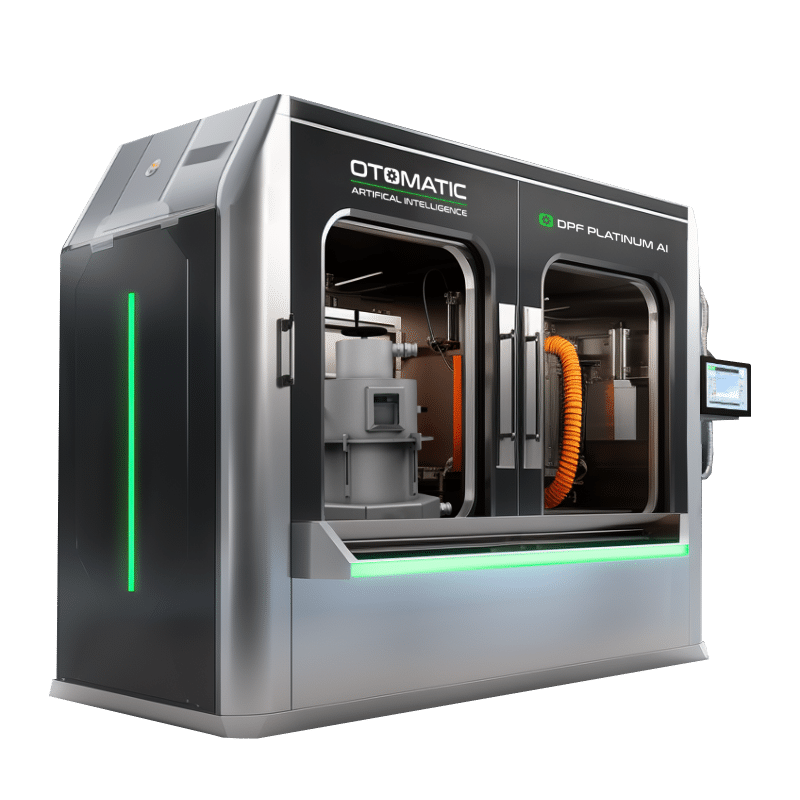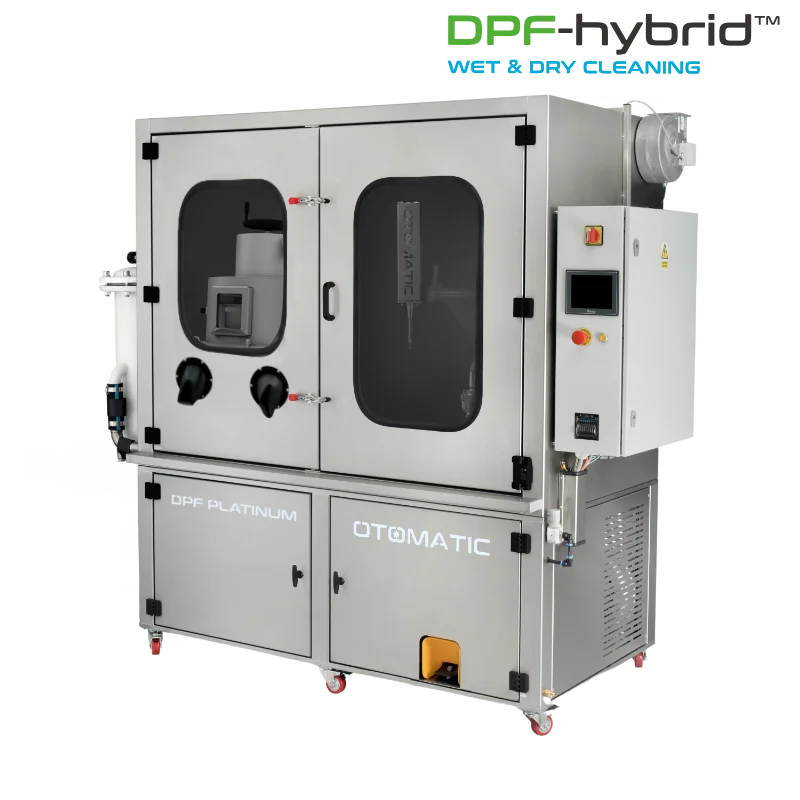A new era in particulate filter regeneration – the advantage of DPF-Hybrid

Table of contents
- From hydrodynamics to hybrid – the natural path of development
- Hidden drawbacks of the classic water method
- DPF-Hybrid – three steps that make a difference
- AI SmartClean – intelligent support instead of risk of error
- Why hybrid are standard in every DPF service center
- The market is still catching up – but customers are already there
- Summary – development instead of compromise
From hydrodynamics to hybrid – the natural path of development
For many years, hydrodynamic cleaning of particulate filters (DPF | FAP) was the standard solution in workshops. A stream of water with detergent and air pulses allowed the filter to regain its patency. At a time when DPFs were larger and more durable, this was sufficient – both for workshops and customers.
However, over the years, it has become apparent that this method has its limitations. Once considered acceptable, today – with growing market demands and stricter emission standards (Euro 7) – they are becoming an increasingly serious problem.
Hidden drawbacks of the classic water method
Old hydrodynamic machines had two fundamental weaknesses:
- No filter preparation stage – the process began with the immediate application of a large amount of water at high flow rate but low pressure. In heavily clogged filters, this meant aggressive pushing out of soot and ash, which risked damaging the delicate channels and at the same time did not guarantee complete unclogging of the structure.
- Ineffective final drying – side channel blowers used in older devices operate with high air flow but low pressure. This meant that only some of the dirty water flowed out of the filter, while the rest remained inside and evaporated. Along with it, solid particles (PM) settled in the channels, which reduced throughput and lowered the efficiency of the entire regeneration process.
At the beginning of the industry, this was acceptable, but today customers and regulators require that the filter be truly clean after cleaning — without any residue that could hinder compliance with standards.
DPF-Hybrid – three steps that make a difference
A solution to these shortcomings has been developed – DPF-Hybrid™ technology. It does not reject hydrodynamics, but develops it into a complete three-step cleaning process:
- Pneumatic blowing – high-pressure air pulses remove dry deposits and open clogged channels.
- Hydrodynamic cleaning – classic rinsing with water and detergent, now more effective thanks to prior filter preparation.
- Pulse hot air drying – unlike a side channel blower working alone, the hybrid system supported by hot pulses removes moisture and solid particles from inside the filter before they can settle and harden inside the channels.
The result is more accurate, repeatable, and safe cleaning that meets the requirements of today’s customers and future environmental regulations.
Read more: A new approach to cleaning DPF filters – what car repair shops really need today
AI SmartClean – intelligent support instead of risk of error
In the most advanced models, such as the DPF Platinum AI, the hybrid process has been supplemented with AI SmartClean™. This system automatically recognizes the type of filter, selects operating parameters (pressure, flow, temperature, cycle time), and automatically generates reports.
AI does not change the cleaning technology, but it relieves the operator of the need to make settings, ensuring repeatability, safety, and time savings.
Why hybrid are standard in every DPF service center
We often hear the question: “Does a small workshop need such advanced equipment?” The answer is yes. Most often, it is DPFs in passenger cars and delivery vehicles that become so clogged they require thorough, multi-stage cleaning.
In practice, this means that hybrid cleaning is becoming the new standard in everyday maintenance services as well, and not just in large fleet service centers.
The market is still catching up – but customers are already there
It’s worth noting that most offers on the market today – both from Polish manufacturers and many other European suppliers – still rely solely on traditional hydrodynamic machines. For years this was considered acceptable, even though the method always had its blind spots. In the early days of the DPF cleaning industry, seeing fine PM dust escaping during weak blower drying wasn’t unusual and was often tolerated.
Today, however, with more delicate filter designs and the tightening requirements of Euro 7, such compromises are no longer acceptable. Hybrid technology is rapidly becoming the new industry standard, and workshops that want to stay competitive need to align with this direction.
Summary – development instead of compromise
For years, the hydrodynamic method was the best solution, but its limitations were always apparent – only in the past did the market turn a blind eye to them. Today, with emission standards becoming increasingly stringent and customers expecting full efficiency, compromises are out of the question.
DPF-Hybrid™ combines the power of air and water in a three-stage process, eliminating the weaknesses of older machines and raising the quality of service to a level in line with current standards.

About the author
Christopher Smolec - CEO of OTOMATIC
Expert in business development and customer relationship building. Since 2018, he has been actively involved in promoting and updating machines and methods for cleaning diesel particulate filters, often known by the acronyms: DPF, FAP, GPF.








